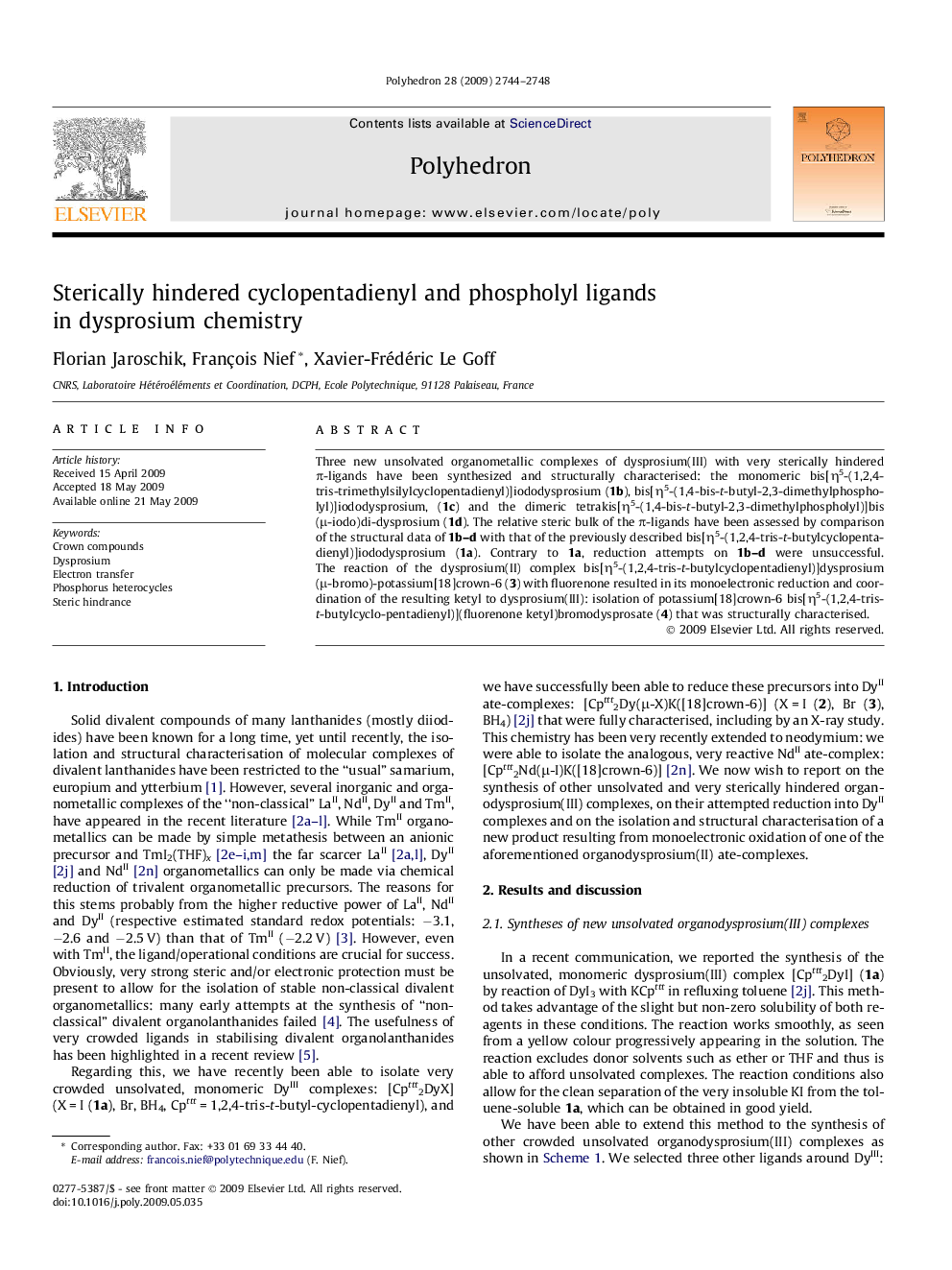| Article ID | Journal | Published Year | Pages | File Type |
|---|---|---|---|---|
| 1339710 | Polyhedron | 2009 | 5 Pages |
Three new unsolvated organometallic complexes of dysprosium(III) with very sterically hindered π-ligands have been synthesized and structurally characterised: the monomeric bis[η5-(1,2,4-tris-trimethylsilylcyclopentadienyl)]iododysprosium (1b), bis[η5-(1,4-bis-t-butyl-2,3-dimethylphospholyl)]iododysprosium, (1c) and the dimeric tetrakis[η5-(1,4-bis-t-butyl-2,3-dimethylphospholyl)]bis(μ-iodo)di-dysprosium (1d). The relative steric bulk of the π-ligands have been assessed by comparison of the structural data of 1b–d with that of the previously described bis[η5-(1,2,4-tris-t-butylcyclopentadienyl)]iododysprosium (1a). Contrary to 1a, reduction attempts on 1b–d were unsuccessful. The reaction of the dysprosium(II) complex bis[η5-(1,2,4-tris-t-butylcyclopentadienyl)]dysprosium(μ-bromo)-potassium[18]crown-6 (3) with fluorenone resulted in its monoelectronic reduction and coordination of the resulting ketyl to dysprosium(III): isolation of potassium[18]crown-6 bis[η5-(1,2,4-tris-t-butylcyclo-pentadienyl)](fluorenone ketyl)bromodysprosate (4) that was structurally characterised.
Graphical abstractA general method for the synthesis of unsolvated organometallic complexes of dysprosium(III) with very sterically hindered π-ligands is presented. It consists in the reaction of potassium cyclopentadienides or phospholides with a dysprosium(III) iodide in refluxing toluene. A dysprosium(II) ate-complex, obtained by reduction of a bis(cyclopentadienyl)dysprosium(III) bromide, was re-oxidised with fluorenone into a charge-separated dysprosium(III) ionic complex featuring a fluorenone radical-anion liganded to dysprosium through the oxygen atom.Figure optionsDownload full-size imageDownload as PowerPoint slide
